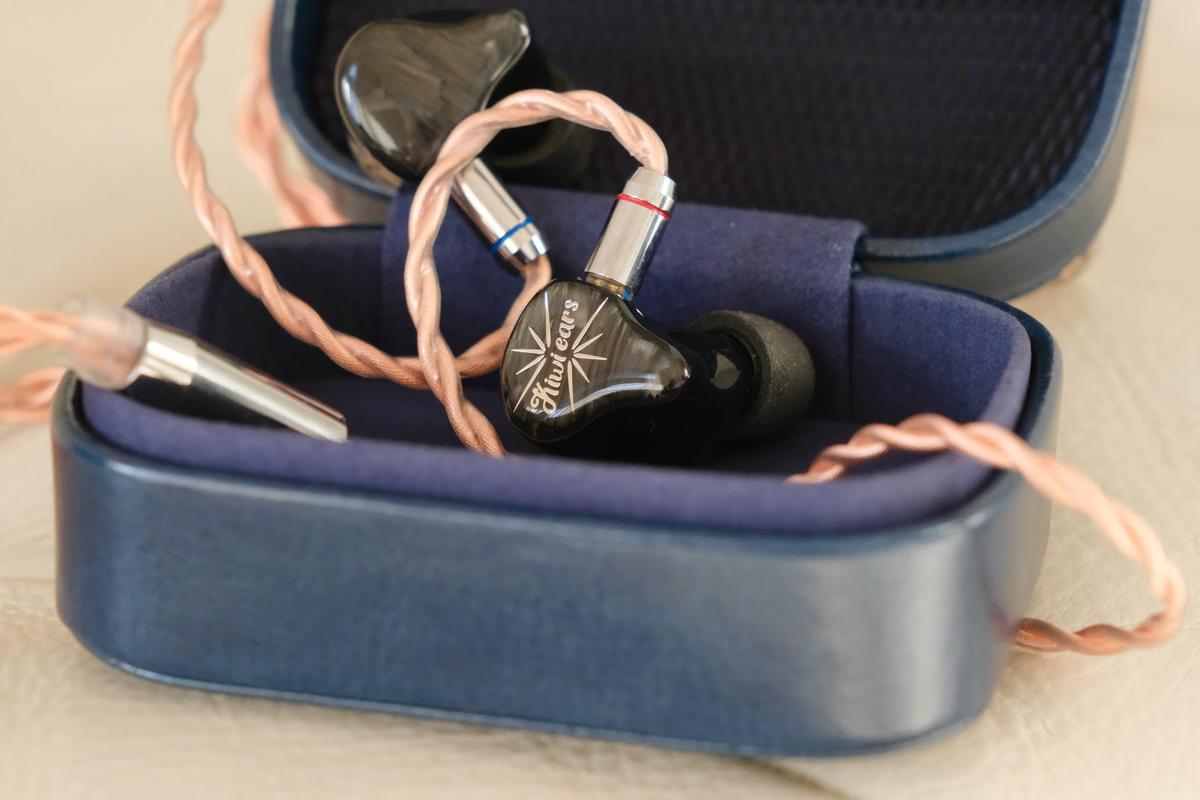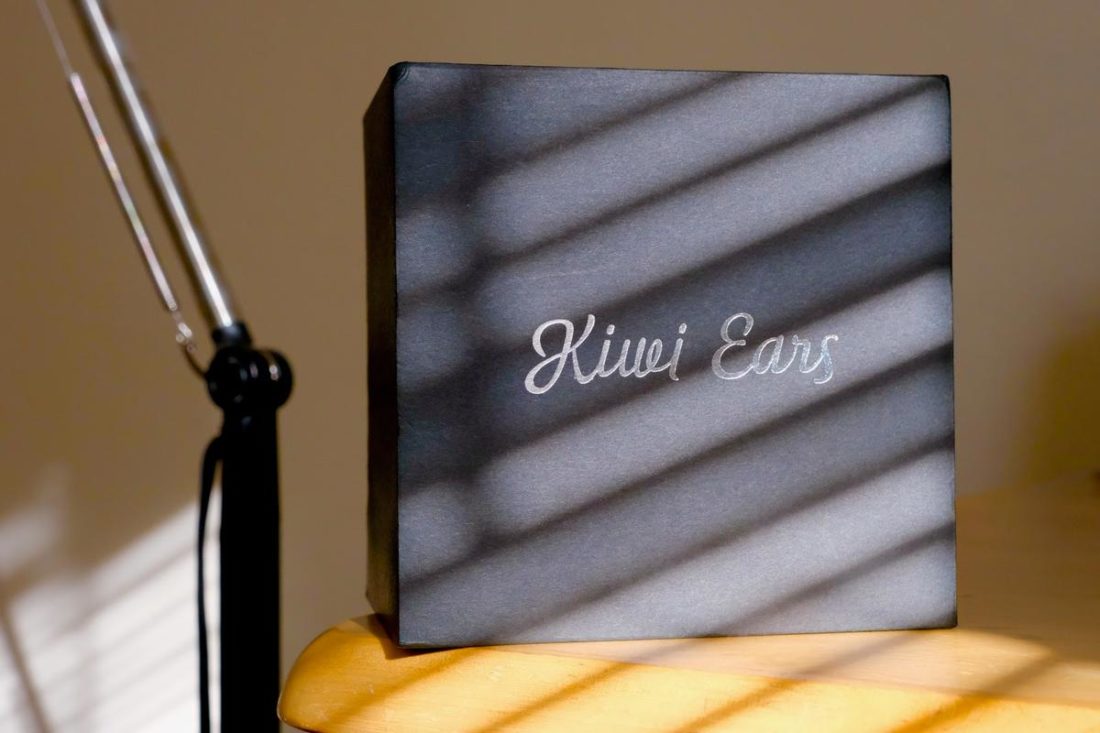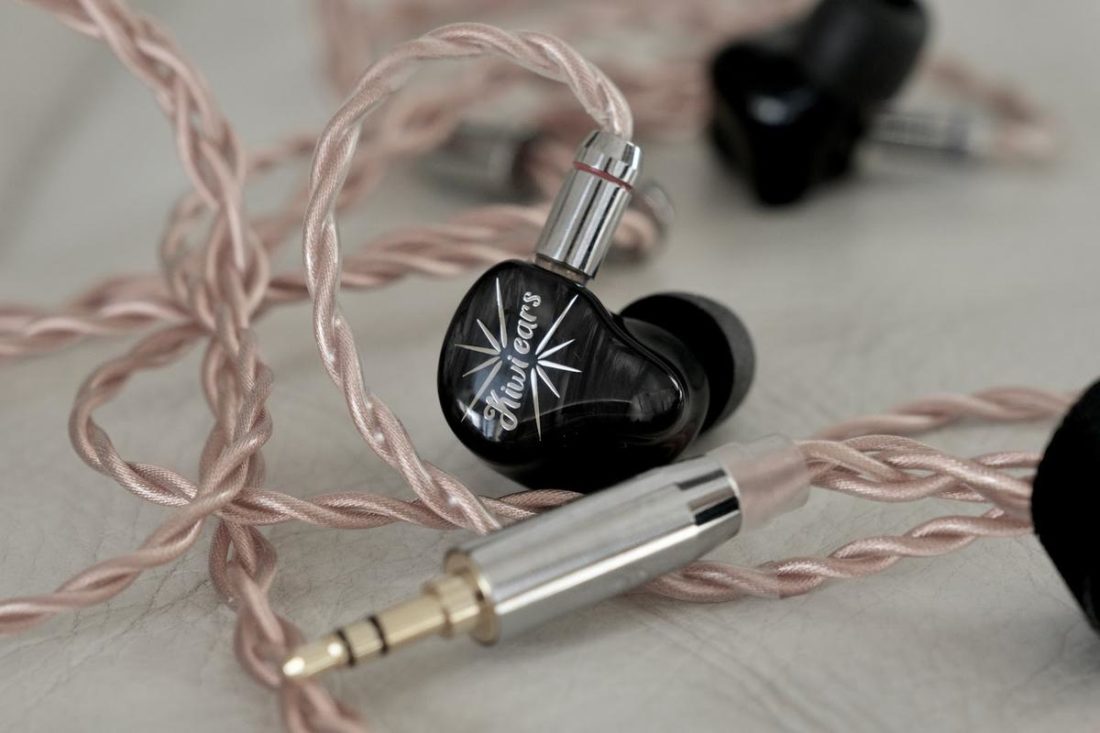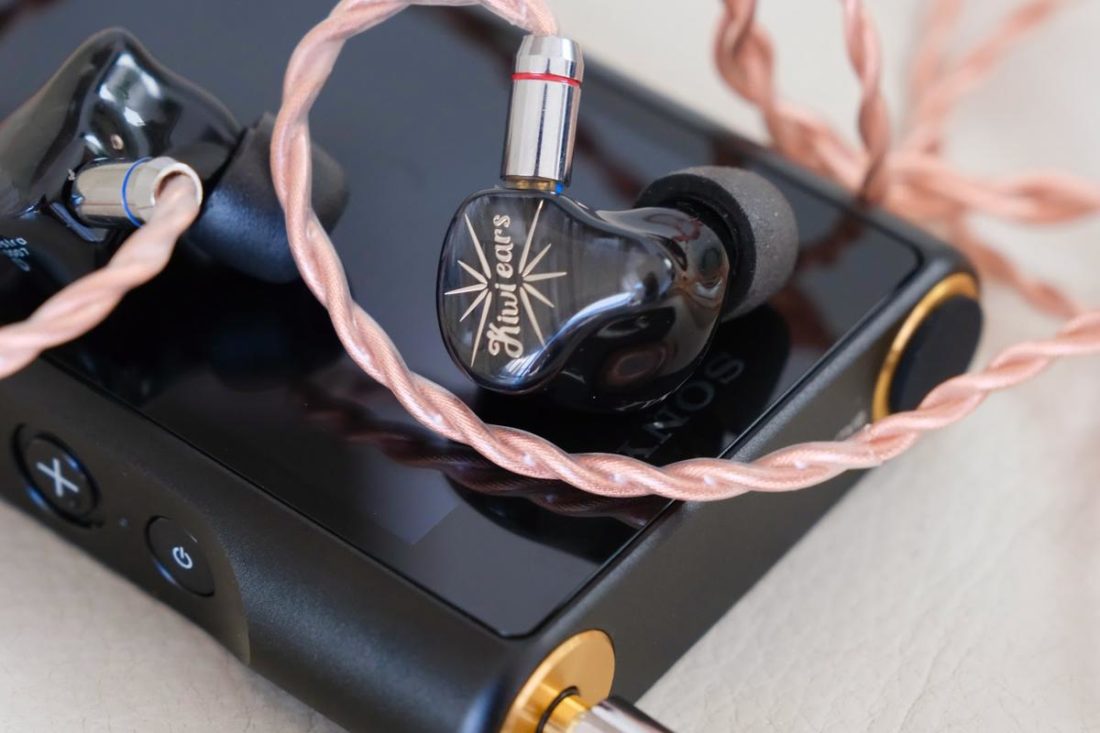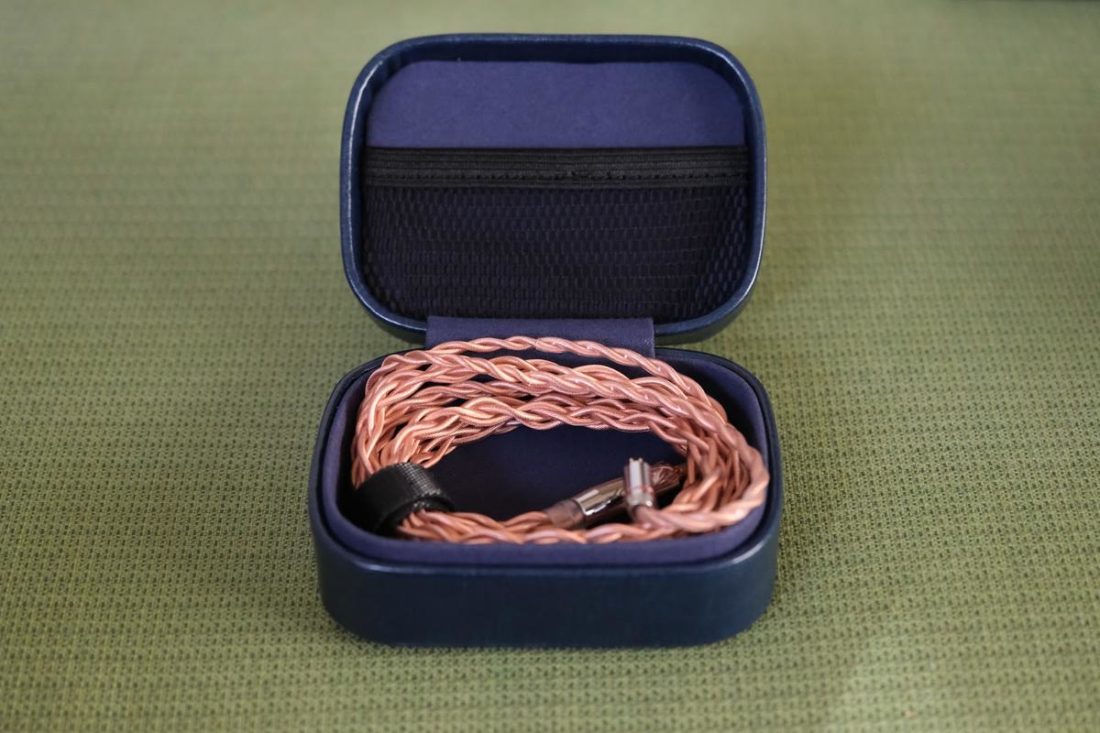You get what you pay for. It’s a well-worn saying, and almost always an accurate one. Whilst quality audio reproduction has never been more affordable, there’s always room for improvement, even if the pursuit often experiences diminishing returns as the price goes up. The truth is, good engineering costs money, so if you really want the best, you have to dig deeper into your pockets. This review focuses on a fine example of what you get when you’re prepared to put down more of your hard-earned money. And if music is your passion, then why not!
Company Overview
Kiwi Ears is evidently a new brand. So new, in fact, that I could only find scant information about the company on Linsoul’s website. The engineers at Kiwi Ears create IEMs targeted at musicians and studio engineers. Their goal is to build IEMs that let the owner fully enjoy their music, without distraction.
Technical Specifications
Form: IEMs Drivers: 8 balanced armature Impedance: 17 Ohm Sensitivity: 111dB Frequency Response: 20Hz – 20KHz Removable Cable: Yes Mic: No Plug: 3.5mm TRS
Packaging
Understatement is the name of the game when it comes to the packaging of the Kiwi Ears. You get a matte black cardboard box with the Kiwi Ears logo on the top, which lifts off smoothly to reveal the IEMs and a small box containing two sets of good quality silicone eartips. Under this there’s an envelope containing a warranty card and some basic instructions.
In the box
Kiwi Ears Orchestra IEMs A 1.2 meter 4-core OFC braided cable 2 x 3 sets of silicone ear tips Carry case Instructions, Warranty and Quality Control card
At the bottom of the box sits a plush, dark blue leather effect case containing the premium copper cable. This is honestly the nicest case I’ve come across for a pair of IEMs. It’s a little on the small side considering the relatively bulky cable, and the magnetic clasp could be stronger, but overall this is a quality case, worthy of a pair of refined IEMs at this price point. The instructions are very basic, and a disappointment here. They really could be used for any IEM, and there are no specifics about how the Orchestras are made, their drivers, or anything about a burn-in period. To be fair, I didn’t notice any significant change in sound signature during my testing, but if I’m spending this amount of money it would be good to know more about my purchase.
Design
The IEMs themselves are made from an acrylic plastic, are moulded in a very ergonomic shape, and feature a tasteful, understated design. They’re mostly black, but have an unusual marble effect on the outside facing side, with the Kiwi Ears logo on the right side (and not the left). There’s also a subtle fluorescent effect, visible in low light. The two-pin cable ports are flush with the surface, and the pins insert with just the right amount of pressure. The cable stands out far more than the IEMs themselves! Its copper color really pops and will be the first thing anyone notices. It’s a beautifully constructed cable that I found to be reasonably pliable, and with no memory. Although it is a little heavy over the ears, and sensitive to movement while listening. The cable is terminated in a regular 3.5mm plug, and there’s a velcro strap to help with bundling the cable to put in the case. The supplied silicone eartips were among the best bundled ones I’ve tried, sitting comfortably in my ears. I also tried them with some Comply foam eartips, which fit without issue.
Internals
The Kiwi Ears Orchestra features 8 balanced armature drivers, 2 for high, 2 for low, and 4 for mids, with a passive crossover system. This is where Kiwi Ears has made an interesting design decision, apparently favoring the subtle detail associated with this kind of driver, versus the punch and impact of a dynamic driver design. The company is clearly aiming these at the reference sound market. No pandering here to the current fashion for powerful bass.
Kiwi Ears Orchestra Sound
Straight away, this is a pair of IEMs that will divide opinion, and if possible, I’d advise hearing them before making a commitment, if you can. Overall, I’d have to agree with Kiwi Ears marketing of these as targeting studio engineers and musicians. Their design goal appears to be accuracy above all else, and if I had to sum up the sound signature, I’d go with ‘beautifully balanced and highly revealing’. My listening was done using my Sony NW-WM1A Walkman, and a Topping D30 Pro / A30 Pro DAC/Amp combination. These are highly sensitive IEMs, and you’ll have no trouble driving them with anything, but at this level of quality you’ll undoubtedly squeeze out more listening pleasure with a dedicated amp.
Bass
As I’ve already hinted, this is not a pair of IEMs for bassheads, and I should say that the first time I started playing my music through these my first reaction was ‘where’s the bass?!’. My musical tastes are broad but do lean toward electronic music that often has plenty of bass all the way down to the lower registers. Definitely not the specialty of the Orchestras. It was only after more extended listening across different genres that I began to truly appreciate the quality and implementation of bass response. These IEMs helped me realise how many inferior sets blur detail in the bass, choosing instead to focus on superficially impressive punch. Some models generate visceral, almost uncomfortable levels of bass. Not an issue here. Bass on the Orchestras is all about refinement and detail retrieval. With all of this said, it would be wrong to think the Orchestras have no bass. One of my favorite albums for testing bass is Baduizm by Erykah Badu. I’ve experienced all kinds of bass responses with different audio setups playing this album, many of them bloated and overblown. With the Kiwi Ears the bass was pitched perfectly and revealed rich texture that stayed light and controlled.
Midrange
This one’s easy: the mids on these IEMs were outstanding. From the moment I started playing music through them, the Orchestras demonstrated how effectively Kiwi Ears has tuned these to meet their target audience. I’ve not heard better mids on a pair of IEMs to-date. They’re a little forward of neutral, but subtly so, and enabled me to enjoy all the rich detail in my music. There were small details popping-out that I hadn’t noticed before, like some gently rhythmic clapping on the opening track of Yello’s Point album. They were always there, but nothing else I’ve played this track through had revealed them to me. The increasingly staccato piano stabs on Johnny Cash’s I Hung My Head were a standout, and the Orchestras conveyed all the growing emotional power of that track supremely well. Vocals were also very strong through these IEMs. With male vocals, like Johnny Cash on his Cash album, all the timbre and tremulous nature of his aging voice were beautifully revealed. And then with female vocals, Stronger Than Me by Amy Winehouse was electrifying. I couldn’t move throughout the whole track, such was the grip her voice had on me. What a sad loss to the world her early death was.
Treble
The top end on the Orchestras continued the highly revealing theme all the way to the very top. I found them just a little bright for my taste, but not offensively so, and never to the extent of being tiring. What felt like a subtle lift in the highs enabled all kinds of details to come through, and I quickly forgot I was in critical listening mode, and relaxed into the music. The tambourine on Jack-Ass by Beck was one standout. I could actually visualize the musician shaking and tapping it. Sounds obvious, but inferior sets just don’t tell the full story in the way these Kiwi Ears did, effortlessly. In the end, I concluded that the brightness I perceived in the top end was in part because of the relative lightness at the low end. Almost as though the whole frequency response curve was tilted slightly up and to the right. Definitely no U-shaped response here, instead the Orchestras provide all the detail you could ask for.
Where to Buy
Linsoul
Conclusion
Having reviewed a lot of great equipment recently, I’m conscious I’m repeating myself when I say this pair of IEMs helped me enjoy discovering new details in my music, enjoying old favorites in a new way. Most of the time, when this happens, it’s one aspect of the sound signature that grabs my attention. With the Kiwi Ears, there were distinctive qualities that revealed themselves across the frequency spectrum. I wouldn’t pick these for listening to my electronic music, because I’d miss my fix of thumping deep bass, but for anything else, they’re winners. From what I can tell this is the first set of IEMs from Kiwi Ears, and I’m left with no doubt that they’ve achieved something special right out of the gate. They say they’re targeting sound engineers and musicians with the Orchestras, and I feel confident these listeners will agree they’ve succeeded. Without question, if these IEMs are in your budget range, and you enjoy most of your listening at home where you can appreciate all the detail, you owe it to yourself to check them out. Your music library will thank you.
